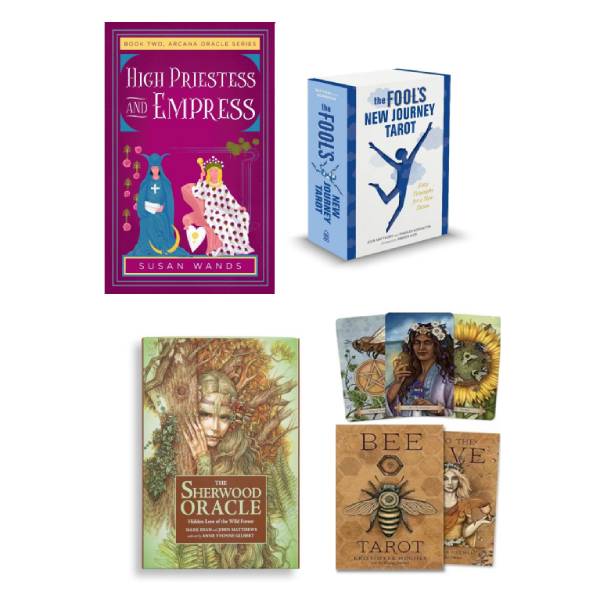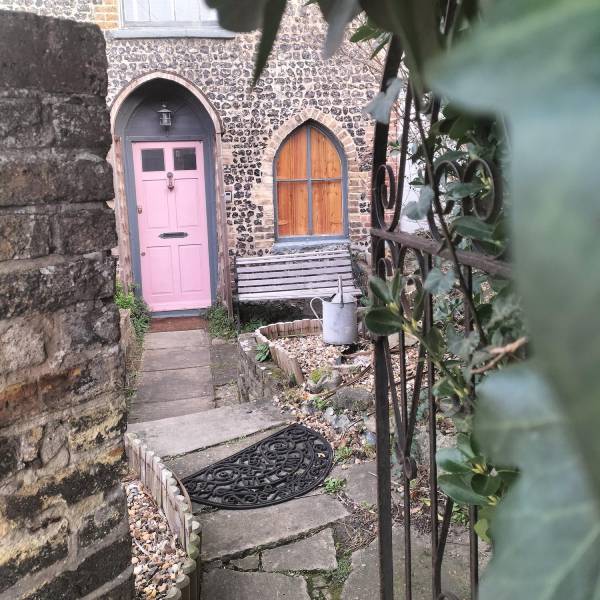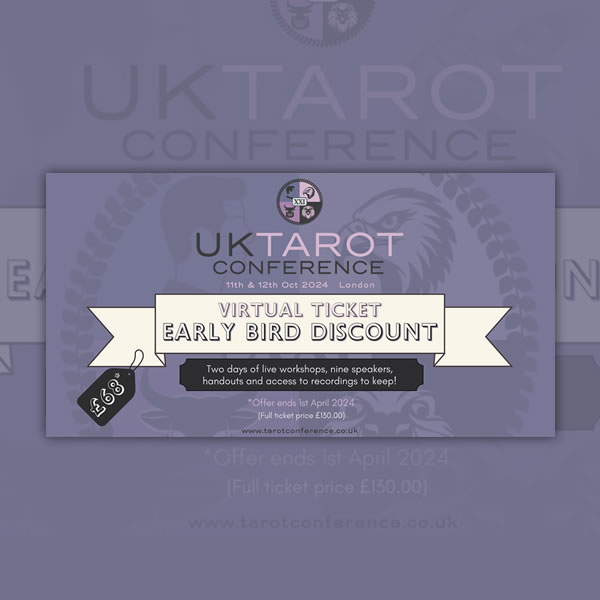Steve has been involved in this field for over thirty years and has completed a wide variety of studies and activities in this time. Steve holds qualifications in a variety of subjects in the spiritual field. He is the creator of ‘The Tarot Therapy Deck and accompanying book, plus three volumes of his ‘Tarot Therapy’ series of books, two other books and card sets, plus a range of meditation cd’s. he has appeared on TV, radio and in a wide range of magazines. He teaches the Tarot internationally and from his base in Poole, Dorset, with a variety of related workshops and group. He is currently co-creating ‘The Gamble-Hounsome Tarot – The Tarot of Gnosis’, with visionary artist Patrick Gamble.
READING WITHOUT SPREADS
As my work with the Tarot developed over the years, I, like many others, came up with spreads of my own that attempted to suit the methods I was working with, yet still I found that I was limited by the spreads and their placings. Eventually I tried simply dealing a number of cards out for the client and reading them in turn. Finally I was able to unlock what I had been trying to get at – what I now term the energy of the cards, as opposed to their ‘meaning’ or ‘interpretation’. To do this I have found that giving readings without a spread is the most effective method.
I begin the process, following the obligatory and necessary good shuffle of the deck, by fanning them out before the client. I then invite them to pick however many cards they feel is right. Many will ask how many they are supposed to or should take and some prompting may be necessary to tell them that are no rules and they should just choose the number they like. All good Tarot readers will be aware of the significance of numbers and so we can apply the numerological influence here, based on the number of cards a client chooses. This will give us the overall, general energy they are working with at the time of the reading.
Attention should also be given to the manner in which a client chooses their cards. An interesting and usually unconscious process takes place that allows us to gain further clues and insight as to their client and their situation. Some clients will arrange the cards in a pattern or spread as they pull them out of the deck and by all means this should be used – I always find this of relevance when it comes to working with the individual cards chosen. Clients may for instance place one or two cards apart for some reason and this always becomes significant.
Next comes an exercise that I call the ‘Balance of Cards’. We already know the general situation from the number of cards chosen along with their attitude or approach to it, from the manner in which they were chosen. Given that we have the complete deck at our disposal rather than a limited, specific number of say 9, 15 or 21 cards to suit our chosen spread, we can gain much knowledge from the cards that do appear – where in the pack they come from and their distribution.
As with the majority of matters relating to the Tarot, there are very few hard and fast rules that we can apply here, since the dynamics will depend greatly on the number of cards chosen. That said I have found that most clients will choose somewhere between 5 and 15 cards, which allows for a good analysis in the manner that follows.
Very basically though, we look to see how many and the percentage of Major Arcana cards chosen, showing us what is happening at the ‘soul level’ of the client. Next we need to see if there is a card from each of the four Minor Arcana suits. This will show us the energies active within the client and their situation at each of the physical, emotional, mental and spiritual levels that the Pentacles, Cups, Swords and Rods represent through their elemental association of Earth, Water, Air and Fire. An absence of any one suit can indicate a need to engage with that energy within themselves, since all human beings exist and depend on all four Elements for our survival and health. Any predominance of any one suit can indicate too much energy being focussed on and so guidance may need to be given on this. Equally we may expect and indeed will usually find that if the client is, for example, asking about a relationship issue, Cups will dominate. Should there be no Swords in such a reading it can indicate a need for communication, or that communication has broken down.
We can then look for the numerological influence of the cards chosen. Firstly it is good to see if there are any numbers duplicated in the selection of cards. The significance of this is not hard for the accomplished Tarot reader – more than one of any number simply increase its power, significance or energy. So should there be two Aces for instance, new aspects to their situation are required, needed and likely and so on.
We can then look to see the spread of Court cards in the selection. Whilst we know that these do not always necessarily represent people in a reading we can tell something of the shift the client may be going through, or need to, within themselves if, as can quite commonly be the case, there are court cards spread throughout their cards. It may be a particular approach or attitude to their situation or problem is called for, indicated by the court card on display. A King of Swords might then tell us that there is a need to listen to and observe the situation and weigh up all pros and cons before making a judgement. The Queen of Cups might tell us there is a need for empathy, understanding, forgiveness and an open heart in their approach – or indeed towards them from another, depending on how the cards are aspected.
This is all prior to actually reading the cards themselves and will have the beneficial effect of instilling a good confidence in the client of your ability and knowledge since you have outlined much that they will identify with before you have begun! What remains then is to ‘read’ the cards in a more traditional way, one by one, beginning with the first card chosen and continuing on until the last has been reached. In my view this is where the real ‘art’ of reading the Tarot lies, in the intuitive ability to link cards together and relate one to the other. What emerges then is rather like the process of storytelling – it all unfolds as we go and each card is another page, or perhaps chapter, of the book.
Reading without Spreads is a little like working without a safety net and throwing oneself at the mercy of the cards! To use the Tarot in this unrestricted way is for me rather like asking the Tarot what it wants to say, rather than giving it a specific question it must respond to. I have found that the wisdom or Spirit of the Tarot is so vast, expansive and all-compassing that it never lets us down. www.tarottherapy.co.uk
Copyright © Steve Hounsome 2016




